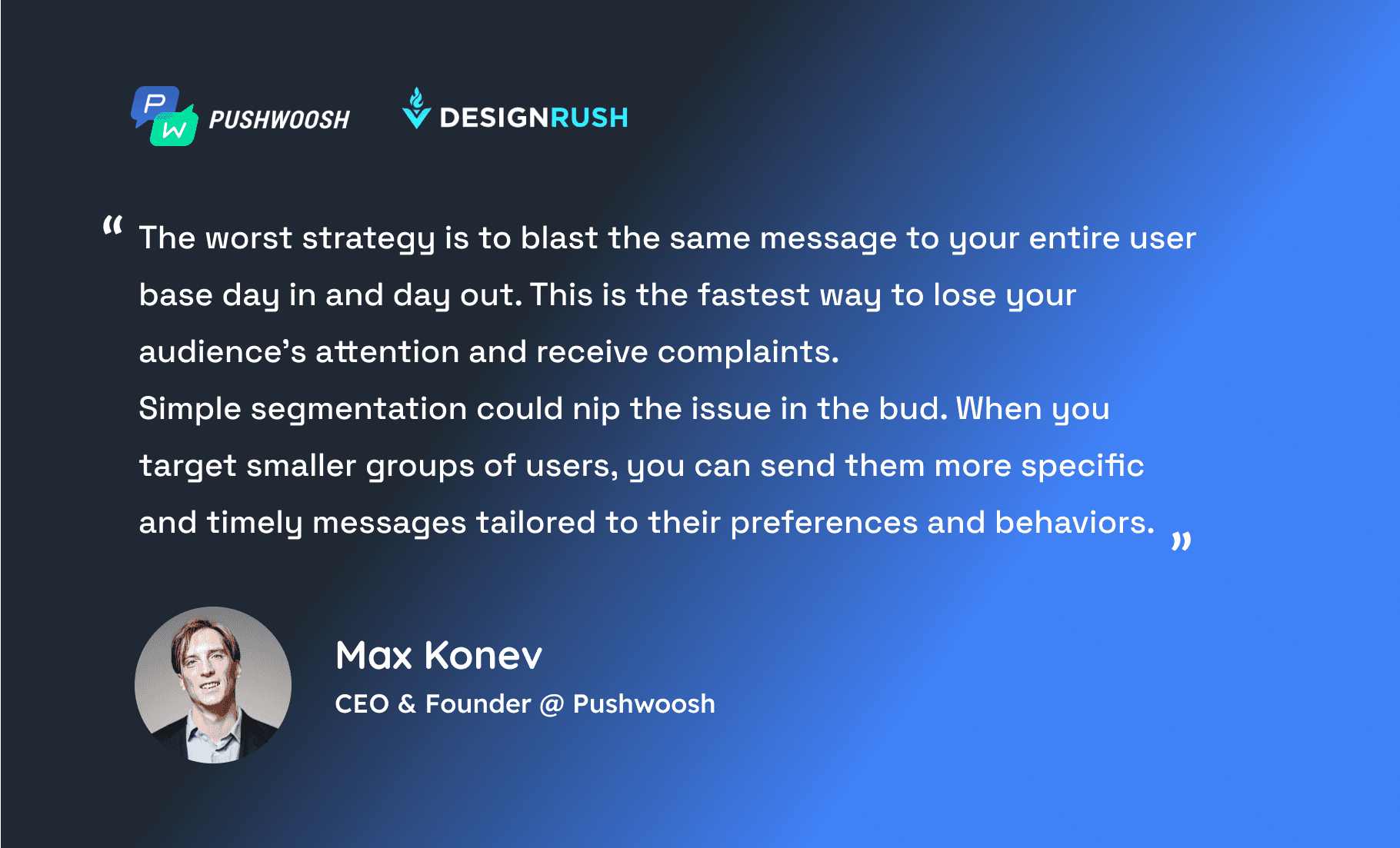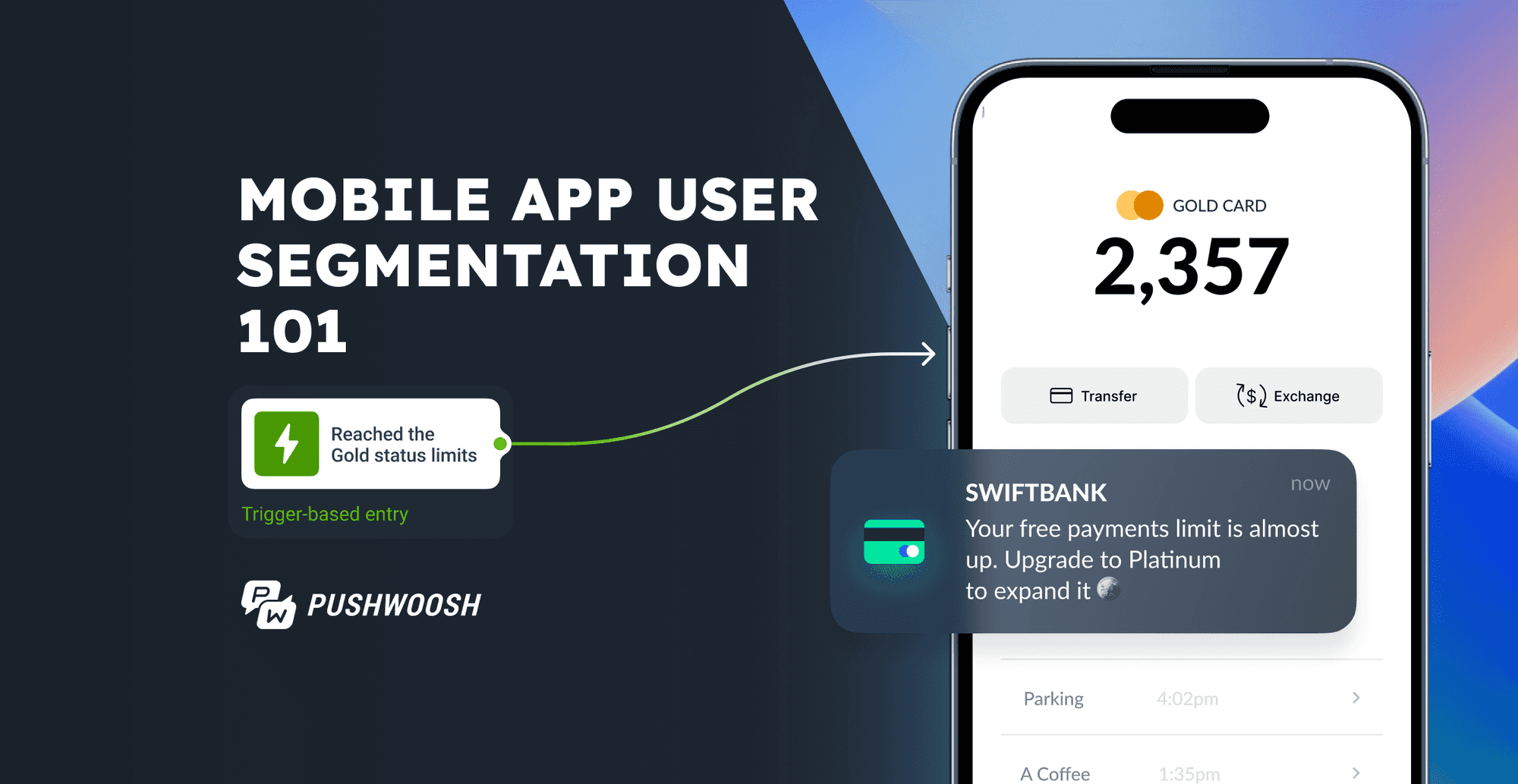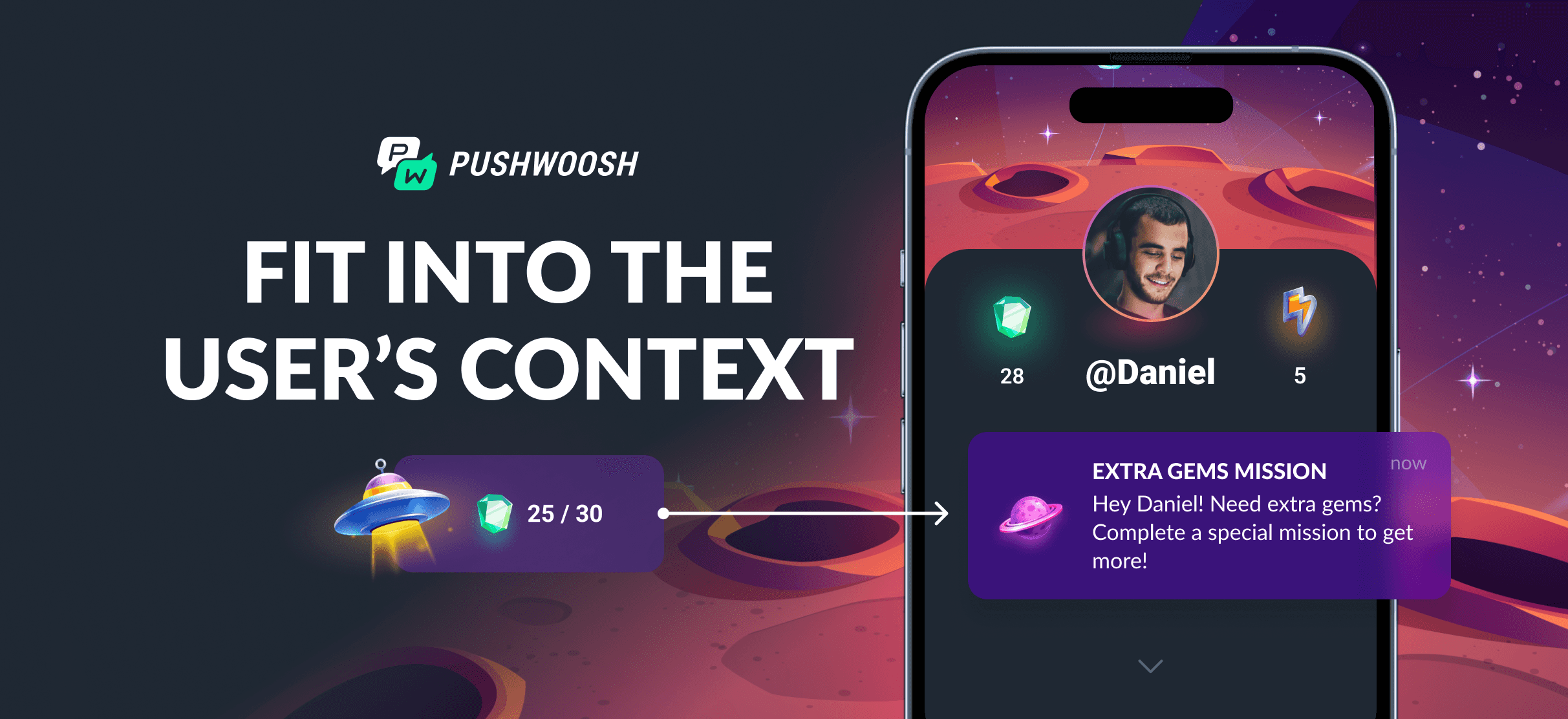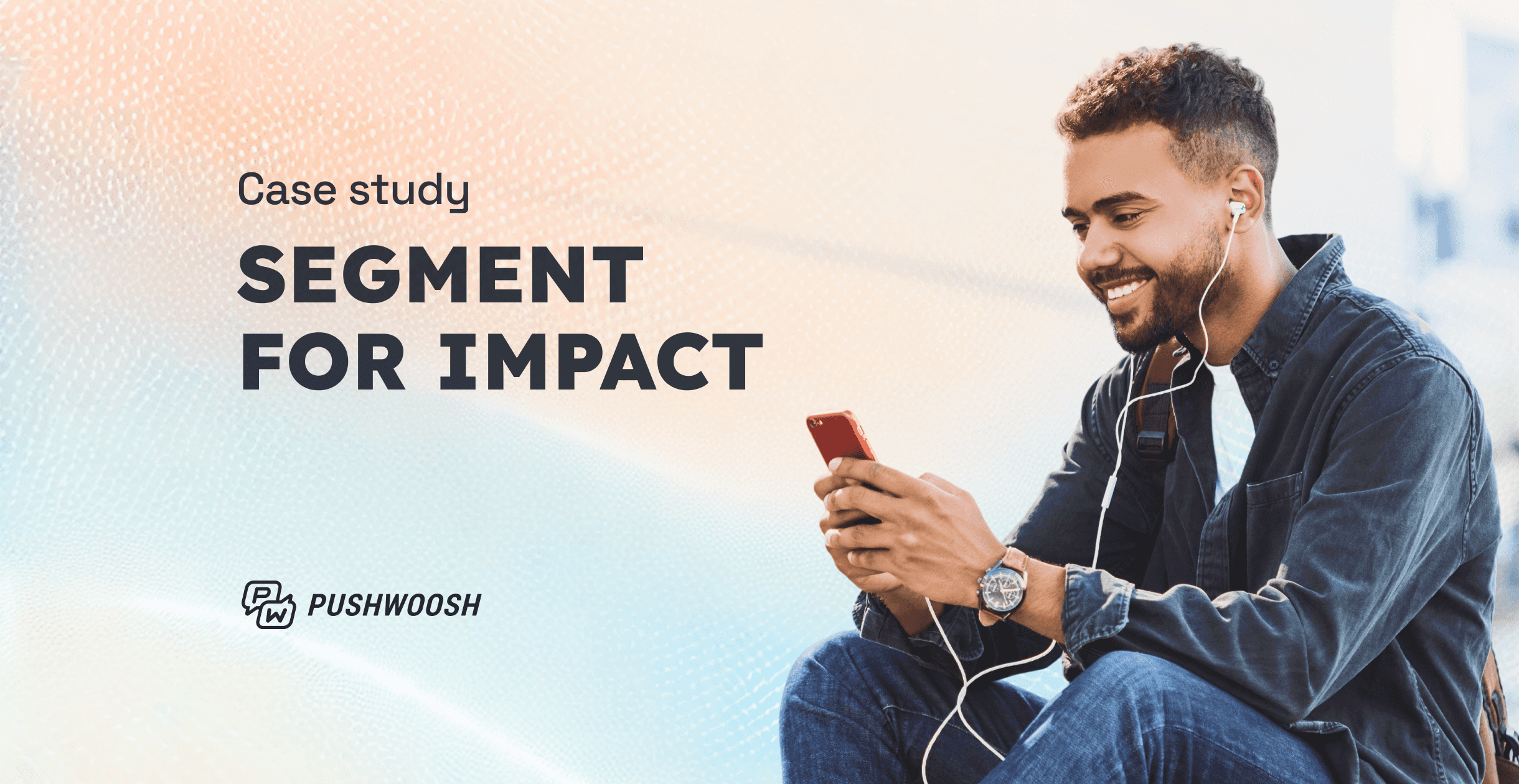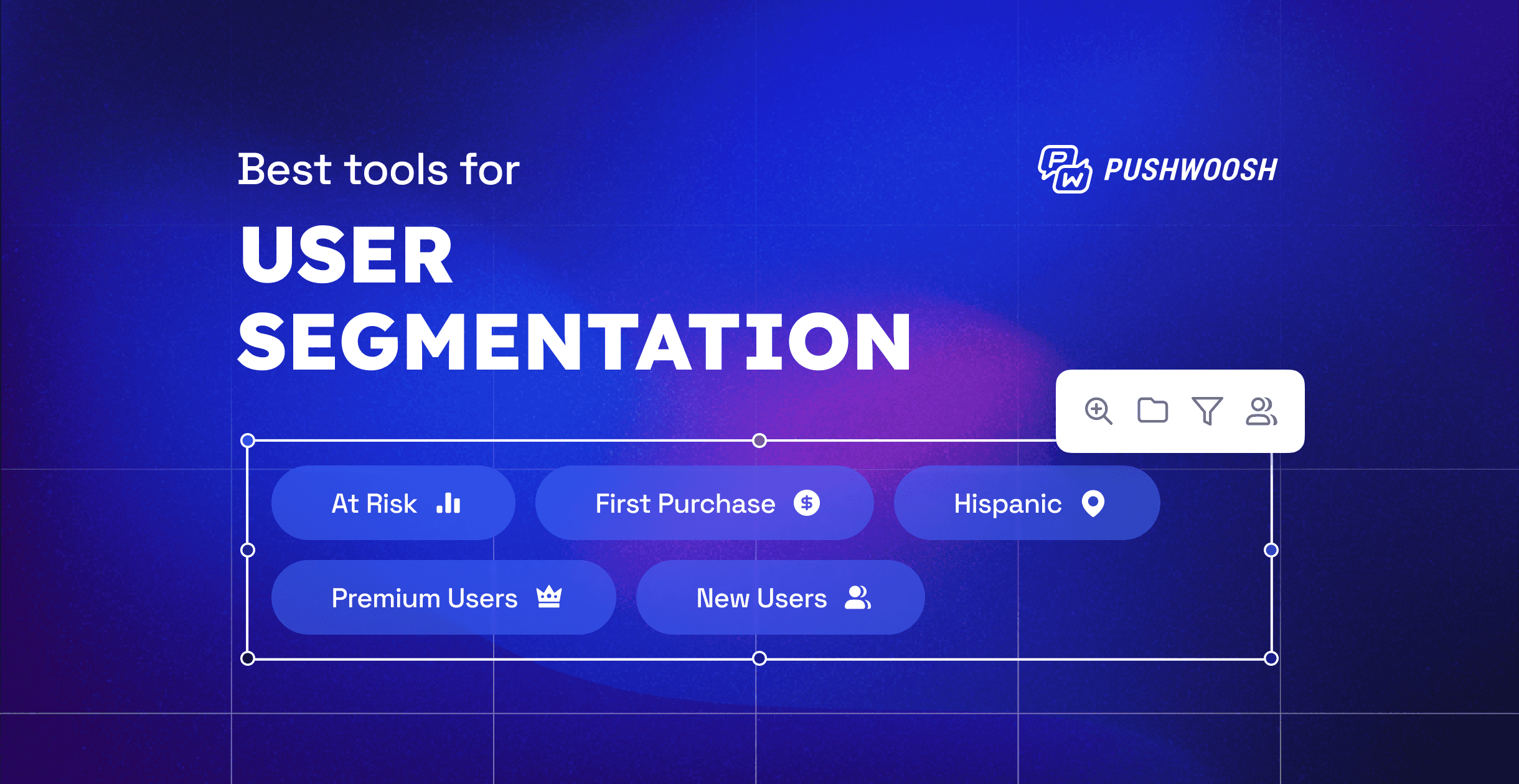Mobile app user segmentation: Top 5 types and success strategies
How well do you know your app users? Understanding their needs can help you maximize the ROI of each message—with minimal effort and time.
That’s where mobile app segmentation comes in. It helps you improve user experience, boost retention, and engage high-value customers.
In this guide, we’ll cover the core concepts of app user segmentation: the key types, methods, and expert tips you can use for your business.
What is mobile app user segmentation?
Mobile app user segmentation helps you divide your user base into distinct groups according to specific criteria and characteristics.
There are numerous dimensions for creating user segments, including:
- Level of activity: Sessions/week, app opens/day, level achieved in a game, etc.
- In-app behavior: Content, features, and messages a user interacts with
- Monetization status: Paying vs non-paying users, frequency of purchases, total spend, etc.
- User lifecycle: New users, existing users, at-risk users, etc.
- Customer lifetime value (CLV): Low/medium/high CLV.
- Demographics and preferences: Geography, age group, gender, push opt-in and email subscription settings, etc.
For example, a gaming app might segment users based on their level of activity (e.g., “daily active users”) and their monetary value (e.g., “high-value users”).
This approach provides benefits that directly affect the bottom line and makes your app marketing strategy more effective.
Why do you need to segment your app users?
Imagine treating every user of your app exactly the same way.
You’ll be chasing casual users with notifications meant for power users, making irrelevant recommendations, and missing opportunities for re-engaging those at risk of churning.
The potential outcome? Lost revenue, lower retention, and reduced engagement.
User segmentation changes everything.
It helps you create personalized offers and messages based on user interests and context. In fact, 80% of consumers are more likely to make a purchase when offered personalized experiences—and segmentation creates a foundation for this strategy.
Source: Interview for DesignRush
To summarize, mobile app segmentation helps you:
⚡Collect valuable user data
⚡Increase user satisfaction
⚡Create targeted marketing campaigns
⚡Boost app usage and in-app purchases
⚡Improve user retention
The top 5 types of mobile app user segmentation
There’s no right or wrong type of user segmentation—your choice will depend on your current situation and goals.
For example, a fitness app might group users based on workout frequency to tailor content and push notifications.
On the other hand, a food delivery app could prioritize geographical segmentation to optimize restaurant recommendations.
Let’s explore the 5 top mobile app user segmentation methods so you can pick the one that suits your needs.
1. Behavioral segmentation
Behavior-based segmentation categorizes users based on their actions and interactions within your app.
This method explores how users engage with your product, how they make in-app decisions, and whether they make purchases. It’s highly effective because it analyzes user actions in real time and suggests relevant content and offers.
For example, the AvaTrade app segmented its users into those who had already created a registered account and those using the demo version.
By sending personalized messages to each segment, the company achieved a 12% higher conversion to real account registration.
There are several ways to approach behavioral user segmentation. Here’s how you can set up your workflow:
🚀 Segment users by a single app action.
Single-action segmentation is a great starting point for your strategy.
Head to Pushwoosh’s Customer Journey Builder tool, create a trigger-based entry and send a single message (or a series of messages) to users who triggered the event in question.
For example, you can target all users who opened our fictional gaming app with a personalized in-app inviting them to start a game and earn new points.
🚀 Engage users based on the absence of actions.
Behavioral segmentation lets you leverage all kinds of user actions—including inaction.
For example, after sending an in-app message, you can track whether the target event occurred within 10 minutes.
If some users opened the app but didn’t start a new game, you can then engage them with a push notification to encourage them to return and start playing.
🚀 Consider how many times an action was taken.
As you get a grasp of user app segmentation, you can test more sophisticated strategies.
Head to Pushwoosh’s Advanced Segment Builder and create a segment of app users who completed certain actions a specific number of times.
For instance, you can categorize gamers who opened the app at least 10 times in the last 30 days and made at least 3 purchases. These are your active and loyal users with whom you can engage in various upsell offers.
🚀 Segment users based on how many times an action was taken, how often it occurred, and how much value it brought.
Once you’ve accumulated enough user data, you can consider the frequency of user actions and their monetary value.
Use Pushwoosh’s RFM Segmentation to identify various groups of users based on two key metrics:
- Recency—how recently a user made a purchase;
- Frequency—how many purchases they made during a given period.
The tool will create distinct user segments you can then engage with different messaging sequences. For example, you can work on re-engaging “at risk” users and send exclusive offers to your “champions.”
Looking for a slightly different approach?
You can also use this tool for non-monetary events (RF segmentation) if app engagement is the core action you’re tracking.
🤔 For instance, one gaming app might be using RFM segmentation to identify high-value users who make more in-app purchases.
🤔 Another gaming app could segment users based on their level of activity because its core revenue comes from ads.
It’s easy to set this up in Pushwoosh: simply add any event as a segmentation condition and exclude the monetary value.
2. Attribute-based segmentation
Attribute-based segmentation lets you group users based on specific user characteristics or sets of filters. It’s a perfectly buildable method you can start applying right away.
At its simplest level, attribute-based segmentation can focus on a single characteristic—e.g., categorizing users by their loyalty level.
For example, you can engage them with a push offering early access to a new feature:
A more sophisticated approach allows you to combine multiple attributes to create highly-targeted campaigns. For instance, you can build a segment with users who:
- Are based in the US,
- Installed the app in the past week,
- Made a purchase within the same timeframe.
You can then design a messaging sequence to engage these users.
For example, send a personalized push notification to drive them back to the app and create a series of in-app banners to promote items (e.g., in-game currency) relevant to their interests.
3. Multilanguage segmentation
Multilanguage segmentation is a specialized form of attribute-based segmentation that focuses on users’ language preferences or settings.
This approach helps you increase open rates and build rapport with your audience. It’s particularly useful for brands and apps operating internationally, regardless of their sector.
For example, Bladestorm—an app that helps gamers update their inventory—achieved a 4.58% increase in revenue from push notifications by using multilanguage segmentation.
But there’s more to it.
Combining language-based segmentation with other attributes can uncover hidden insights.
For instance, by identifying users in Spain who prefer English, we can pinpoint expats within our user base. This could be extremely useful for apps promoting events and meetups.
4. Geo-based segmentation
Geographical segmentation leverages user location data to deliver personalized messages and app experiences. It typically comes in two forms:
📍Real-time location tracking: Allows you to send push notifications and other content when users enter specific areas.
For example, a location-based augmented reality game like Pokémon GO uses geo-based segmentation to enhance player experiences. It integrates the real world into its virtual universe and collects a wealth of geolocation data on players.
This could be useful for creating location-specific events or spawning rare creatures in certain areas.
Image source: https://zugara.com/pokemon-go-is-driving-augmented-reality-and-geolocation-adoption
📍Static location attributes: This approach uses fixed location data from user profiles or acquisition channels.
For instance, you can try Pushwoosh’s integration with AppsFlyer to identify users who came through ads in the US and send personalized messages relevant to this region.
5. Push notification segmentation
Push notification segmentation categorizes user groups based on their responsiveness to push notifications.
It’s a powerful (yet often overlooked) strategy.
While many app marketers focus on creating perfect messages, they often miss the opportunity to analyze how users interact with these notifications.
Doing so can help you avoid overwhelming less responsive users, engage active users, and adjust your communication strategy for different user groups.
There are several types of push notification-based segmentation:
⚡Reachability-based: Segments users based on their ability to receive push notifications.
This helps you identify unreachable users who have opted out of push notifications,allowing for alternative communication (e.g., sending an email).
⚡Open rate segmentation: Categorizes users according to how they interact with push notifications.
It lets you send personalized messages based on whether a user opened the previous push notifications or not.
⚡Conversion segmentation: Groups users based on whether they complete a desired action after receiving a push notification.
For example, Pushwoosh’s “Conversion period” feature allows you to specify a time window for tracking conversions. This way, you can consider conversions that occur over time and adjust accordingly.
⚡Subscription preferences: Focuses on users’ notification preferences to improve relevance and satisfaction. It’s especially common in news and media sectors but can also be relevant to travel, health, and other niches.
For example, Wetter.com uses advanced Pushwoosh Segmentation to automate the delivery of weather forecasts based on users’ preferences:
Expert tips for effective app user segmentation
Let’s explore the core best practices for improving app user segmentation in your mobile app.
1. Set clear goals and metrics
Just like in other areas of marketing, user app segmentation should start with specific and measurable objectives.
For example, you can aim to:
- Increase click-through rates among users who’ve completed the onboarding process.
- Boost conversion to sign-up among first-time app visitors.
- Increase in-app purchases for players who’ve reached level 10 in your game app.
Make sure to track both primary objectives and secondary metrics that help you get there.
Tools like Pushwoosh’s Conversion Funnel help you analyze KPIs at different levels and find potential bottlenecks.
For example, you can see how users move from opening the app to seeing a banner and making a purchase, and add necessary improvements.
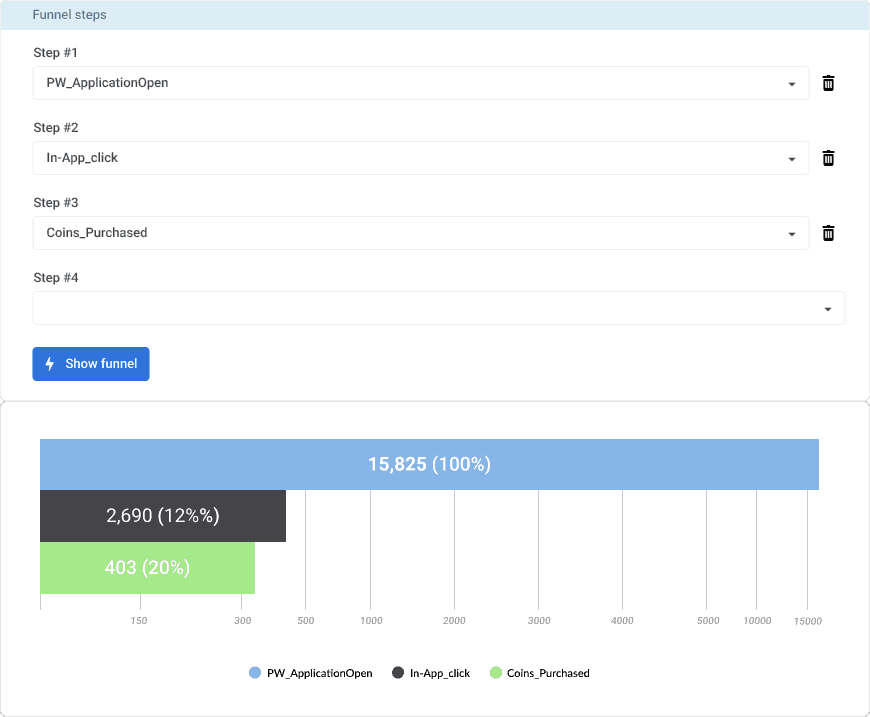
2. Leverage real-time behavioral data from Day 1
If you’re just getting started, work with the user data you currently have—even if it’s something as simple as showing a user’s name and using their pre-defined preferences.
Did you know you can also use behavioral data almost from the start?
💡Look at recent user actions like app opens, feature usage, or content interactions.
Pushwoosh allows tracking such simple user actions through default events that start collecting user data from the moment the SDK is integrated.
This approach lets you create targeted communications responding to users’ real-time actions and needs.
For example, you can craft personalized offers for users opening your app:
Soon enough, you’ll be able to build complex segments like “users who’ve opened the app in the last 24 hours” or ” users who’ve added items to their cart but haven’t purchased.”
It’s important that you choose a flexible, accessible user segmentation tool that captures all user interactions.
It’ll help you create basic user groups now and collect data for advanced segmentation in the future.
For example, with Pushwoosh, you can:
- Leverage any segmentation methods with ease
- Design dynamic segments based on users’ characteristics and actions
- Build effective personalized messages with custom and pre-built tags, events, and liquid templates
- Conduct experiments and A/B tests
- Seamlessly connect various data sources
- Analyze performance and find areas for improvement
3. Centralize and activate your user data
As you accumulate data from past user interactions, you’ll be able to create more sophisticated segments and further personalize your app communications.
To get the most out of this approach, use an actionable customer data platform instead of a basic segmentation tool. Pushwoosh’s CDP helps you manage and activate user data effectively across various channels—without lengthy and complicated manual setup.
💡For instance, if you know that a user came from an ad about arcade games, you can build a personalized onboarding tour referring to the same theme:
4. Introduce ongoing tracking and optimization
Always go back to your initial objectives and optimize your segmentation strategy accordingly. It’s essential for improving campaign results in real time and optimizing costs.
Modern tools like Pushwoosh let you do that in an easy, automated way.
🚀 Track channel performance in real time.
For example, you can check metrics (like conversion rates) for every message in your sequence within the Pushwoosh Customer Journey Builder canvas.
This way, you might identify and exclude underperforming channels, reducing costs and improving campaign results. You could also find that certain formats or messages perform better than others and amplify them in your strategy.
🚀 Run various experiments to optimize campaign performance.
For instance, add a segment split and check how different segments engage with your message.
Or, use A/B/n testing to test variables like the content of your message, the time you send it, and more.
In a gaming app, this could reveal that casual players respond better to achievement-based notifications, while more active (and competitive) players engage more with leaderboard updates.
Achieve better results with smart app user segmentation
Segmenting your app users helps you create effective personalized experiences and boost conversion rates. It lets you send the right messages, at the right time, to the right user—without overloading them with irrelevant information.
You can use various app segmentation methods, including behavioral segmentation, attribute-based segmentation, geo-based segmentation, and others.
Whichever strategy you choose, start by setting clear goals and metrics. Next, use real-time behavioral data and combine it with other user attributes as you start building advanced segments.
The key to success? Choosing a reliable and flexible user segmentation tool to support your efforts. Pushwoosh has everything you need to build a competitive segmentation strategy for your app.


